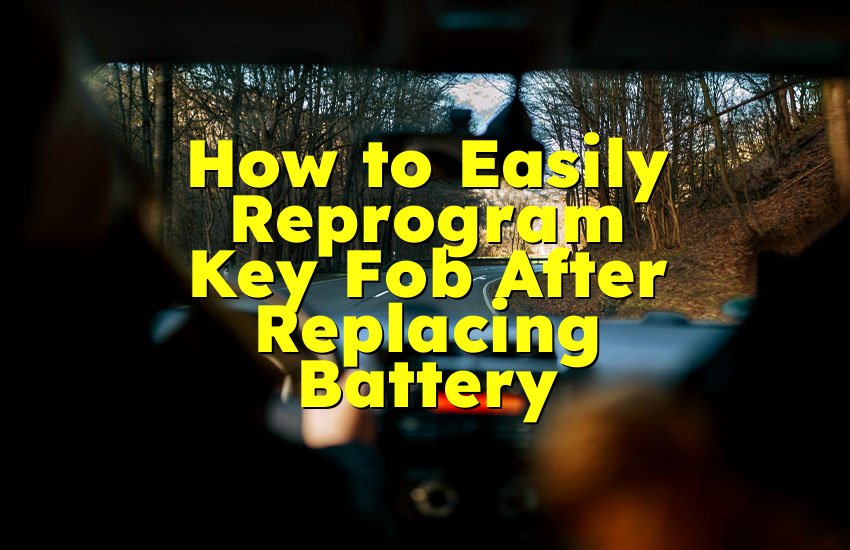As an Amazon Associate, I earn from qualifying purchases at no extra cost to you.
How to Repair Sun Damaged Car Paint (Expert Tips Made Easy)
Sun damage can make your car look old and worn. Fading, peeling, and rough paint happen when UV rays hit the car too long. Many people think they need a new paint job, but you can fix sun damage at home. In this article, you will learn simple ways to restore your car paint and make it shine again. Even if your car looks dull now, these easy methods can bring it back to life quickly.
Assessing the Damage
Before doing anything, you need to check how bad the sun damage is. Look closely at your car in bright light. You may see fading, small cracks, peeling, or rough texture. Touch the surface gently to feel uneven areas. Knowing the damage level helps you pick the right repair method and avoid wasting time.
After checking, decide if you can fix it yourself or need professional help. Small fading or dull spots can be fixed at home. Deep cracks or peeling may need a specialist. Take pictures if needed. They help you track progress and see how much work is left.
Next, consider the car's paint type. Some paints handle sun damage better than others. Older cars usually have single-layer paint, which fades faster. New cars have clear coats that protect color, but even they can get sun damage. Knowing your paint type helps pick the right polish or compound.
Finally, gather your tools before starting. You will need soap, water, microfiber cloths, polish, wax, and optional rubbing compounds. Having everything ready keeps the process smooth. You avoid mistakes and save time while repairing your car's paint.
- Check all visible paint areas in sunlight
- Feel for rough or peeling spots
- Decide DIY or professional repair
- Know your car paint type
- Gather necessary tools
Washing and Cleaning the Car
Cleaning your car properly is the first real repair step. Dirt, dust, and grime can scratch paint if you polish without cleaning. Use a gentle car soap mixed with water. Wash one section at a time using soft microfiber cloths. Always rinse thoroughly to remove soap residue.
After washing, dry your car with a clean microfiber towel. Avoid using rough fabrics that can scratch the surface. Pay attention to corners and edges. Dirt often hides in these spots. Drying well prevents water spots and helps polish stick evenly.
Next, remove stubborn contaminants like tar, tree sap, or bird droppings. These can damage paint further if left. Use a safe car detailing spray or clay bar. Work slowly in small areas. Always keep the surface wet while using clay.
Finally, inspect again after cleaning. Sometimes damage looks worse before it gets better. Small scratches or dull areas may appear. This step helps you plan how much polishing or rubbing compound is needed. Cleaning is essential before any paint restoration.
- Wash with gentle car soap and water
- Dry with microfiber cloths
- Remove tough contaminants carefully
- Inspect for hidden scratches and dull spots
Polishing the Paint
Polishing brings back shine and removes small sun-damaged areas. Choose a polish that matches your paint type. Use a foam applicator or a soft cloth. Apply small amounts in circular motions. Work section by section to avoid uneven polish.
Always start with light pressure. Too much pressure can remove clear coat or thin paint. After applying, let it dry briefly. Then buff gently with a clean cloth. You will see dull areas turning shiny. Repeat on other sections as needed.
For deeper damage, consider using a rubbing compound first. It removes small scratches and rough texture. Apply carefully and follow with regular polish. This step may take longer but gives better results. Transition to polishing afterward for smooth, even color.
Finally, check your work in sunlight. The paint should look smoother and more vibrant. Some areas may need another round. Patience is important. Polishing is a slow but rewarding step in restoring sun-damaged paint.
- Choose polish for your paint type
- Apply with foam applicator in circles
- Use light pressure, buff with clean cloth
- Use rubbing compound if needed first
- Inspect in sunlight for smooth shine
Applying Protective Wax
Wax protects your newly polished paint from future sun damage. It also adds a deep shine. Use a high-quality car wax designed for your paint. Apply a thin layer with a foam pad in small circular motions. Cover the whole car evenly.
After applying, let the wax set for the time recommended on the label. Usually 5–15 minutes. Then, buff off with a clean microfiber cloth. This final step seals the polish and protects against UV rays. It also helps repel dust and water.
Waxing regularly helps maintain color and shine. Many car owners forget this step, and sun damage returns quickly. A monthly wax routine keeps paint looking fresh. Remember to wax in shade or cool temperature to avoid streaks.
- Choose car wax suitable for your paint
- Apply thin layer in circles
- Let set, then buff off gently
- Wax monthly to prevent new sun damage
Repairing Deep Scratches and Peeling
If your paint has deep scratches or peeling, extra care is needed. Start by sanding lightly with fine-grit sandpaper. This smooths rough edges and prepares the area for touch-up paint. Always sand gently to avoid further damage.
Next, apply touch-up paint that matches your car's color. Use a small brush for accuracy. Let the paint dry completely. Sometimes, multiple layers are needed for full coverage. Patience is key in this step.
After paint dries, polish gently to blend with the surrounding area. Then apply wax to protect it. This combination restores smoothness and protects from UV rays. Regular touch-ups prevent peeling from spreading.
Finally, inspect carefully under sunlight. Ensure edges are smooth and color matches. If needed, repeat touch-up or polish again. Deep damage repair takes time, but results are lasting.
- Sand rough edges lightly
- Apply matching touch-up paint
- Allow drying between layers
- Blend with polish and protect with wax
- Inspect and repeat if needed
Maintaining Restored Paint
After repair, maintenance keeps your car looking fresh. Wash regularly with car soap and water. Avoid harsh detergents that remove wax. Dry thoroughly to prevent water spots. Regular cleaning keeps paint smooth and shiny.
Wax every month to protect against sun and dust. Avoid parking in direct sunlight for long periods. Use a car cover if possible. Small habits prevent damage from coming back.
Check paint for new scratches or dull areas often. Early treatment makes repair easier. Keep microfiber cloths and polish handy. With care, your car paint stays vibrant for years.
- Wash with gentle car soap
- Dry fully to avoid spots
- Wax monthly for protection
- Avoid long sun exposure
- Inspect regularly and treat early
Final Thoughts
Repairing sun-damaged car paint is simple with the right approach. Cleaning, polishing, and waxing can restore shine quickly. Deep scratches or peeling require extra care but are manageable at home. Regular maintenance prevents future damage. With patience and the right tools, your car can look new again. Sun damage is not permanent if you follow these steps carefully.
| Task | Tools Needed | Tips | Frequency |
|---|---|---|---|
| Cleaning | Car soap, microfiber | Wash in sections | Weekly |
| Polishing | Foam applicator, polish | Light pressure, circular motion | As needed |
| Waxing | Car wax, microfiber | Apply thin layer | Monthly |
| Touch-ups | Sandpaper, touch-up paint | Multiple layers for deep scratches | As needed |
| Inspection | Bright light, cloth | Look for fading or scratches | Weekly |
Frequently Asked Questions (FAQs)
Is it possible to fully restore sun-damaged paint at home?
Yes, minor sun damage can be fixed at home with cleaning, polishing, and waxing. Small fading or dull spots respond well to polish and wax. For deeper peeling or cracks, touch-up paint may be needed. Consistent care and proper products can restore shine without professional help. However, extreme damage might still need specialist repair.
Can I use household products to fix sun-damaged paint?
It is not recommended. Household cleaners or polishes can be too harsh and cause scratches. Use products made for car paint. Car soap, polish, and wax are designed to clean, shine, and protect without damage. Using proper products ensures the repair lasts longer and looks professional.
Do I need special tools for polishing?
Not always. You can polish by hand using a foam applicator or microfiber cloth. Machine polishers work faster but are not necessary for small areas. The key is gentle, circular motions and patience. Using simple tools properly can give excellent results for sun-damaged paint.
Is it safe to sand sun-damaged areas?
Yes, but carefully. Use fine-grit sandpaper and apply light pressure. Sand only rough edges or peeling spots. Avoid removing too much paint, or it may worsen damage. Proper sanding prepares the surface for touch-up paint and smooth blending with existing paint.
Can waxing prevent future sun damage?
Yes, wax forms a protective layer that shields paint from UV rays. Regular waxing keeps color vibrant and reduces fading. Wax also repels dirt and water, making the car easier to clean. Monthly application is usually enough for daily protection and long-lasting shine.
Do I need to repair scratches before waxing?
Yes, fixing scratches first ensures the wax protects a smooth surface. Waxing over damaged paint does not repair it. Polishing, touch-up paint, or rubbing compound should be done before applying wax. This gives the best results and prevents further paint damage.
Is it necessary to check paint type before repair?
Yes, different paints react differently to polish and wax. Older single-layer paint may need gentler treatment. Modern clear coat paint can handle more aggressive products. Knowing your paint type helps you choose correct repair methods and avoid mistakes that can worsen sun damage.
Can regular maintenance prevent sun damage?
Absolutely. Washing, drying, and waxing regularly protect the paint from UV rays and dirt. Avoid long sun exposure when possible. Regular inspections help catch small scratches early. Consistent care keeps the paint smooth, shiny, and long-lasting.











